Grape sheltering: tips from an experienced gardener |
Grapes are a heat-loving crop that requires special attention from the gardener. The autumn care of the plants determines their further development and the harvest in the next season.
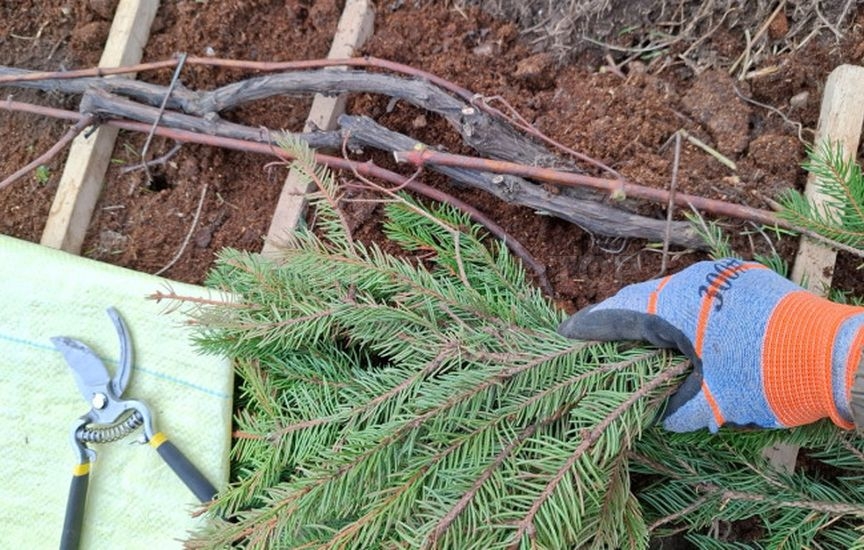 Until the cold weather begins, you should not start sheltering the grapes: the first frosts are not dangerous for the vine—they help the plants harden. To ensure the grapes overwinter successfully, they must be properly prepared for shelter and insulated in time. How to prepare grapes for sheltering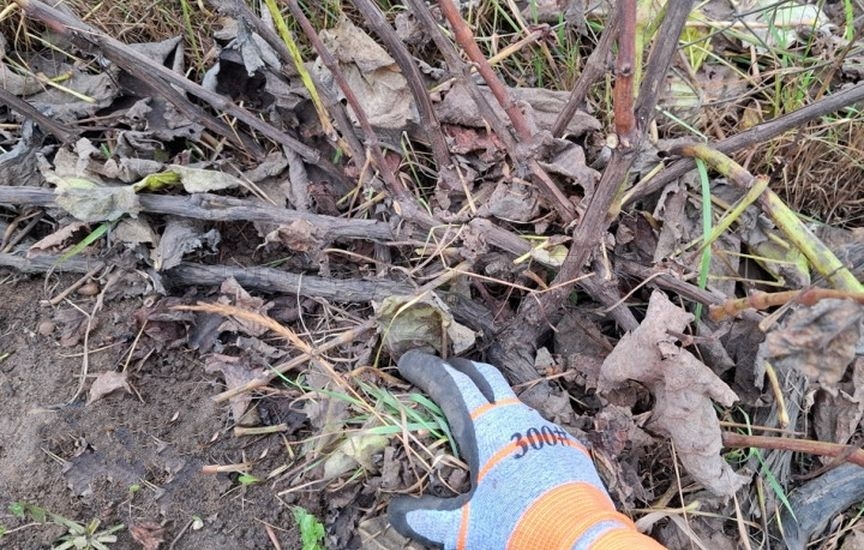 In October–November, while the temperature remains above zero, you need to remove all plant debris from under the bushes, water, fertilize the grapes, treat them against diseases and pests, mulch the soil under the bushes, and remove the vines from the trellis. Let’s take a closer look at the most important aspects of autumn grape care. Watering and fertilizing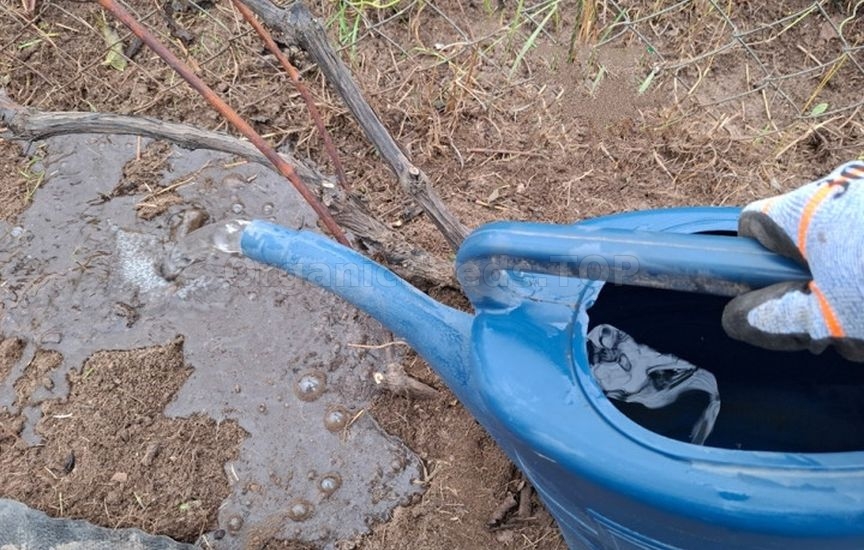 Autumn fertilization of grapes, carried out after harvest, accelerates the ripening of shoots and helps the bushes prepare for the cold. If autumn is dry, grapes should be watered before fertilizing, and then potassium-phosphorus fertilizers should be applied: 25–30 g of superphosphate and 20 g of potassium sulfate or 20 g of potassium magnesium per bush. You can also use a water solution of monopotassium phosphate (10 g per 10 liters of water) or wood ash (if soil acidity is below 6 pH), as well as complex fertilizers with a high content of potassium and phosphorus. About a week before sheltering, moisture-charging watering should be carried out so that the soil is thoroughly saturated with moisture at the root layer depth. This will increase the vine’s winter hardiness and prevent the soil from freezing too deeply. The amount of water needed per bush depends on the soil type and autumn precipitation. Grape pruning in autumn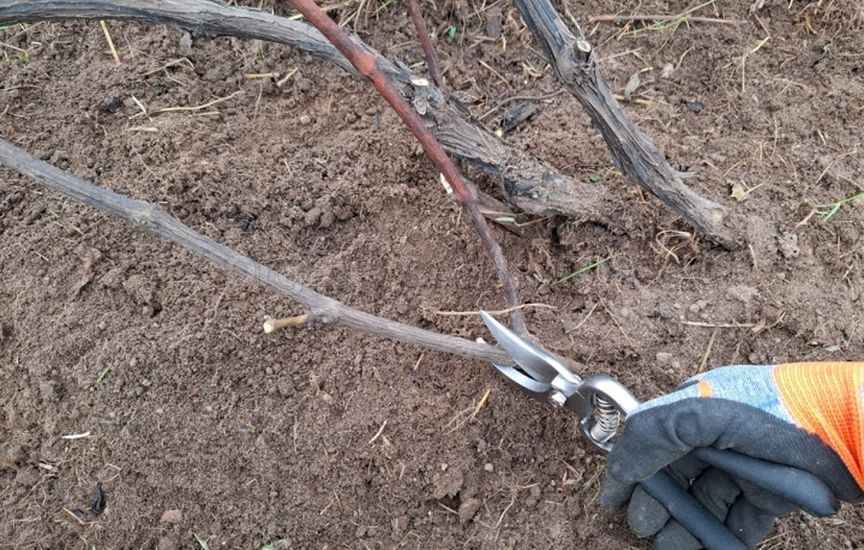 Autumn pruning of grapes is carried out after leaf fall. First, remove all thin, dry, and damaged shoots. On mature bushes, leave no more than three arms, and on each arm select 3–4 of the strongest vines and prune them to the length of lignification. If the lignified part of the vine has more than 12 buds, shorten it and leave 6–12 buds. The larger the shoot diameter, the more buds can be left:
During autumn pruning, it’s better to leave more shoots and not prune them too short in case some vines freeze or rot. Shaping pruning can be completed in spring.
After pruning, remove all plant debris from under the bushes and burn it in a specially equipped place. Treatment against diseases and pests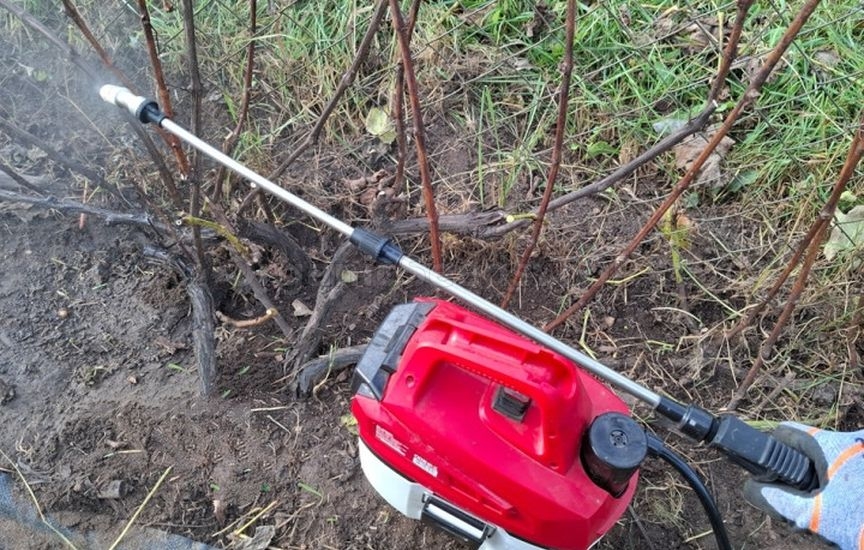 Even if you treated grapes during the season for diseases and pests, it’s still worth carrying out eradication treatment before sheltering. For this, you can use a 3% solution of Bordeaux mixture, a 3% solution of iron sulfate, or a mixture of iron sulfate and urea: 300 g of iron sulfate and 400 g of urea per 10 liters of water. Iron sulfate with urea is most effective against diseases and pests that have settled for winter in bark cracks on the trunk. To help the solution adhere better to the shoots, add a sticker or liquid soap (50 ml per 10 liters of solution). Then treat the base of the bushes and shoots from all sides. Mulching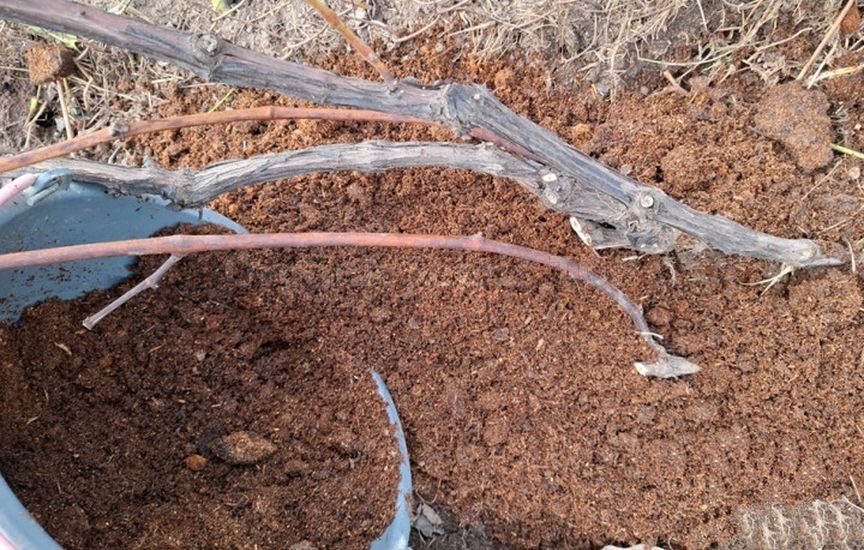 Grapes are mulched immediately before sheltering, after watering, fertilizing, pruning, and treatment. For this purpose, you can use mature compost, humus, rotted sawdust, or a mixture of deacidified peat and compost. Organic mulch not only protects the root system from severe frosts but also provides additional nutrition to the bushes in the next season. When and how to shelter grapes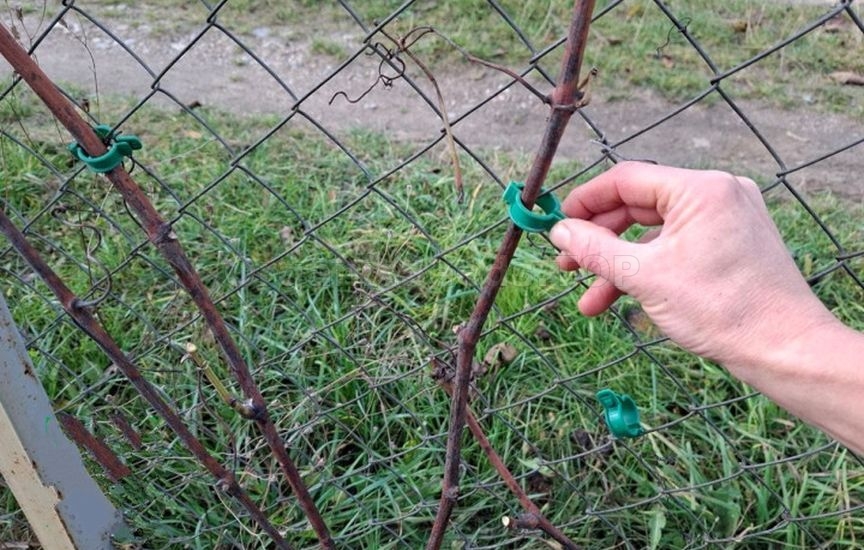 Do not rush to shelter grapes, as throughout autumn, until stable cold sets in, the process of shoot lignification continues. If you rush and insulate the grapes too early, before the first frosts, moisture will accumulate under the covering material, and the grape shoots will begin to rot. You can start sheltering when stable frosts begin. But remove the vine from the trellis, tie the shoots, and bend them to the ground in advance, while the temperature is still positive. It is highly undesirable to place solid materials such as foam, slate, boards, etc., under the vines, as they act as thermal insulators. In winter, heat rises from the soil, which helps increase the air temperature under the shelter—especially important during sudden cold snaps. 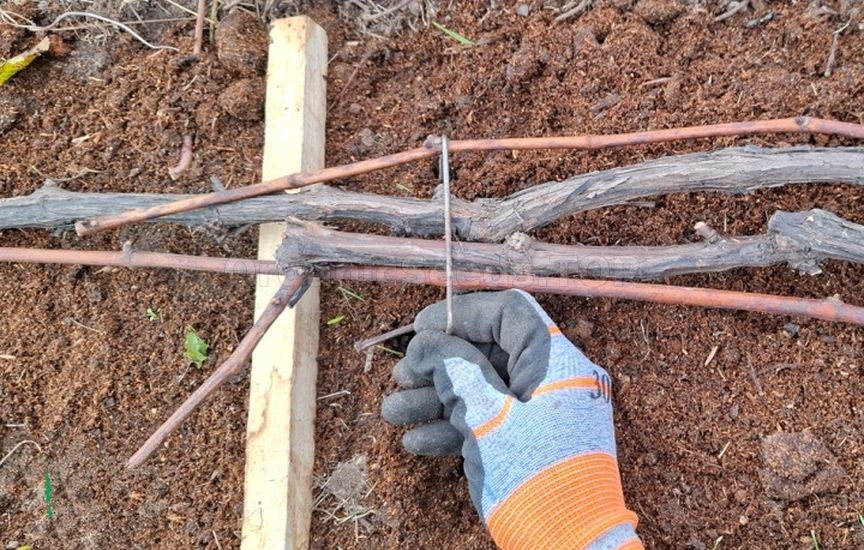 To prevent vines and arms from touching the soil surface and getting wet during thaws, you can place small blocks or spruce branches under the shoots. This helps prevent mold formation on the vineyard. Shoots laid on blocks can be fixed with bent rebar or staples for securing agrofabric. There are several ways to insulate a vineyard, each with its own advantages. When organizing shelter, consider the region’s weather conditions and the specifics of grape cultivation. The most convenient way to protect grapes from frost is to use dense agrofabric: light-colored agrofabric or nonwoven covering materials (spunbond, spangram, or obernit) with a density of at least 120 g/sq.m. Less dense materials should be laid in 2–3 layers. Agrofabric protects plants well from frost and ensures ventilation of the shelter. 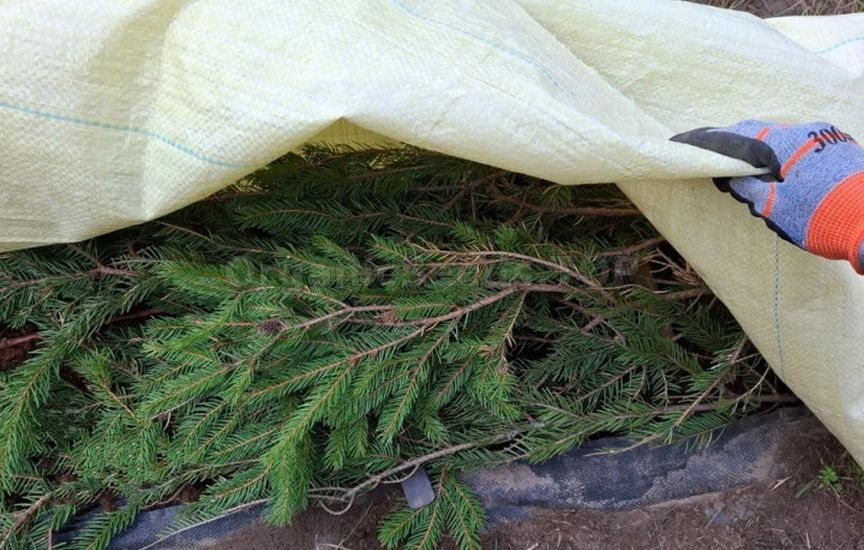 In harsh winters, grapes can first be covered with spruce branches, and then with dense agrofabric. Spruce branches create an excellent air layer, do not compact, repel rodents, and reduce the risk of fungal diseases, as needles release phytoncides. Leaves and mown grass should not be used to shelter grapes, as such organic matter compacts and rots, which can lead to vine death. Straw is also unsuitable for insulating bushes, as it attracts rodents. If you use film or other airtight materials to shelter grapes, then before the frosts, you need to build a frame of arches or slats over the vines removed from the trellis. The ends of the film shelter should be regularly opened during thaws to prevent condensation and shoot rotting. Don’t forget that the best shelter for grapes is snow. So if there is heavy snowfall in winter, grapes can overwinter under this natural cover. But if winters are low-snow and frosty, additional insulation of the vineyard should be taken care of in advance. |
|
|
